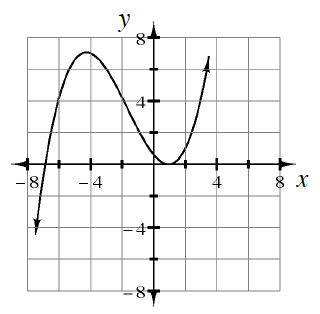
Home > INT3 > Chapter 8 > Lesson 8.3.1 > Problem 8-102
8-102.
Each graph below represents a polynomial function. For each function, state its minimum degree. Then state the number of real and complex roots it has.
Example: The graph of

Degree
There are two distinct real roots, one of which is repeated.

Degree
There are two real roots and two complex roots.


